In-Depth
KubeCon 2023 North America: Tiny Containers, AI & Other Cloud-Native Goodies
- By Benjamin Rubin
- 11/27/2023
The bustling halls of McCormick Place in Chicago, host of this year's KubeCon (Nov. 6-9), witnessed a multitude of technologies and solutions that are reshaping the landscape of Kubernetes and container orchestration.
 [Click on image for larger view.]
[Click on image for larger view.]
As a media analyst, I had the opportunity to delve into several noteworthy presentations, as well as a chance to meet with several companies making big impacts in the Kubernetes community. Below is a recap of the sessions that I attended and companies that I talked to.
Monday: Secure Supply Chain, Tiny Containers, Cloud-Native Troubleshooting, More
Getting Oriented: Arriving at the venue the initial challenge was familiarizing myself with the sprawling event space. The convention center was absolutely massive, and it took me several minutes to figure out where I was heading. After I registered for the event and picked up my badge, I was able to visit a few lightning talks. These offered a diverse array of insights and perspectives from experts in the field.
Aserto: Securing the Software Supply Chain: Omri Gazitt, from Aserto, drew attention to their focus on a secure software supply chain for Open Policy Agent (OPA) policies. Omri showcased the use of Topaz and introduced the OPA site, emphasizing policy-based control for cloud-native workloads. One notable feature was the ability to create and sign policy images, providing a robust framework for policy enforcement. As a bonus, attendees could snag an eye-catching t-shirt that featured an axolotl salamander that represents Aserto's ability to blend style with security.
 [Click on image for larger view.]
[Click on image for larger view.]
Tiny Talk on Tiny Containers: Efficiency, Sustainability, Security: Eric Gregory's talk on reducing container size brought attention to critical aspects of efficiency, sustainability and security. The emphasis on excluding unnecessary components within containers resonated strongly with the crowd. The talk delved into the use of Alpine Linux, a streamlined system that removes excess baggage, leading to more secure and efficient containers. The mention of distroless, a minimal base image, and exploring WebAssembly (Wasm) on Kubernetes added a layer of technical depth to the discussion.
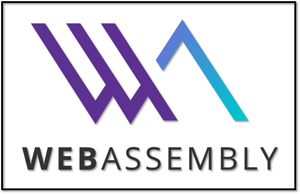 [Click on image for larger view.]
[Click on image for larger view.]
Choose Your Own Abstraction: Exploring Platform Interfaces: Emily Wong's presentation offered insights into choosing the right platform interface, striking a balance between lower-level customization and higher-level standardization. The discussion revolved around Backstage, highlighting components essential for platform development. Addressing the challenge of updates, Wong suggested leveraging GitOps for familiar and seamless changes within the Kubernetes interface.
From Novice to Keptn Contributor: Empowering Community Engagement: Yash Pimple's journey from a novice to a Keptn contributor showcased the vast ecosystem of cloud computing. Pimple emphasized contribution opportunities, urging newcomers to start small and prioritize clear communication within container ecosystems. Practical advice, such as practicing empathy, seeking guidance, and paying it forward through documentation, demonstrated the importance of community collaboration.
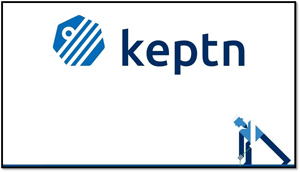 [Click on image for larger view.]
[Click on image for larger view.]
Can We Create Pilots That Build Platforms? Troubleshooting Cloud-Native Applications: The final lightning talk session I attended highlighted the critical role of controllers for Custom Resources (CRs) in extending Kubernetes functionalities. The discussion touched on the importance of vector databases as a key part of the stack for large language model (LLM) applications. A focus on autonomous problem-solving through CLI hacking and troubleshooting applications via kubectl showcased the hands-on approach to problem resolution.
Tuesday: Keynotes, Dynamic Resource Allocation, Rapid App Deployment, More
Keynote Speakers Set the Tone:The conference on Tuesday kicked off with a captivating keynote address by Priyanka Sharma, a prominent figure in the cloud-native ecosystem. As the executive overseeing cloud-native initiatives, Sharma highlighted the significance of Kubernetes in the operations of major organizations, including OpenAI, NVIDIA and Hugging Face. Notably, she emphasized the extensive use of Kubernetes nodes by OpenAI, exceeding a staggering 7,500 nodes.
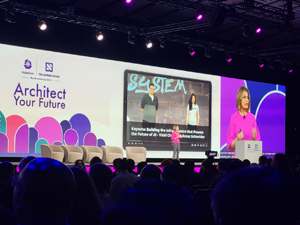 [Click on image for larger view.]
[Click on image for larger view.]
Sharma's address wasn't confined to numbers; she delved into the potential economic impact of generative AI, estimating a whopping 4.4 trillion dollars! An intriguing aspect was OpenAI's commitment to open-source solutions, exemplified by projects like the "ollama pod" and "kubernetes kinder," enabling dynamic resource allocation for faster computation. These projects, along with others, are accessible on GitHub, inviting developers to explore and contribute.
Dynamic Resource Allocation Takes Center Stage: The theme of dynamic resource allocation continued in subsequent sessions, featuring Tim Hockin (Google), Marlow Weston (Intel), Kevin Klues (NVIDIA) and Joseph Sandoval (Adobe). The panel delved into the evolving landscape ofLLMs and the incorporation of GPUs in Kubernetes. Dynamic resource allocation in alpha form was a hot topic, addressing concerns related to power usage, particularly in the context of energy-intensive processes like cryptocurrency mining.
Sharma's action items included addressing Kubernetes issues related to dynamic resource allocation and active participation in the End User Research Group to influence the future of AI.
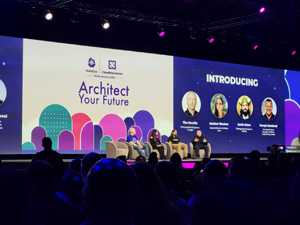 [Click on image for larger view.]
[Click on image for larger view.]
Preservation and Community Engagement: This was a standout session for me. It was led by Taylor Dolezal, focusing on preservation and the narrative carried forward by end-users. Dolezal highlighted the NICE initiative (Networking, Impact, Comprehension, and Endorsement) providing a forum for organizations to collaborate and share experiences. The emphasis on effective communication with CNCF project maintainers and the "zero to merge" four-week program showcased NICE's commitment to community engagement and development.
Pure Storage -- Empowering Rapid App Deployment: Another highlight of the conference was an interview with Murli Thirumale from Pure Storage. The discussion revolved around empowering customers to showcase their work through containers and Kubernetes. Pure Storage's approach involves providing a data platform for platform engineers, enabling efficient scaling and deployment of containerized applications across various industries, from finance to retail.
The interview shed light on the importance of aligning infrastructure with AI requirements, emphasizing elasticity and self-service capabilities. Noteworthy was the convergence of AI, ML and cloud-native technologies, with Pure Storage playing a crucial role in hosting and virtualizing underlying data.
 [Click on image for larger view.]
[Click on image for larger view.]
Challenges in Scaling Minecraft with Kubernetes: Intriguingly titled "15,000 Minecraft Players vs. One K8s Cluster," this session featured Justin Head from Super League and Cornelia Davis from Spectro Cloud. The discussion revolved around the challenges and solutions of moving the Minecraft workload into the cloud, especially in the context of the significant surge in player engagement during the COVID-19 pandemic.
The session highlighted the importance of creative problem-solving, including considerations for cost savings, bare-metal infrastructure and the role of Kubernetes in managing game services efficiently.
Exploring PostgreSQL on Kubernetes: The conference also addressed the pertinent question: "Can Kube run big PostgreSQL databases?" This session, led by experts in disaster recovery and cloud-native PostgreSQL, delved into the intricacies of PostgreSQL disaster recovery, exploring recovery point objectives and recovery time objectives.
The introduction of a Kubernetes-native database for PostgreSQL workloads showcased the power of automated, declarative management through operators. The demonstration of Kubernetes volume snapshots and future enhancements underscored the ongoing evolution of cloud-native PostgreSQL.
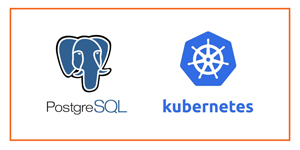 [Click on image for larger view.]
[Click on image for larger view.]
Cloud-Native Tutorial and Future Developments: The day concluded with a tutorial on cloud-native technologies, featuring essential topics such as container creation, observability and policy enforcement. The tutorial emphasized the use of tools like Prometheus and Fluentd for metrics collection and unified data collection, providing me with practical insights into implementing these commonly used cloud-native solutions.
Wednesday: Edge Orchestration, Simplifying Kubernetes, Continuous Container Deployment, More
Zededa: Edge Orchestration for Big Enterprises: Wednesday started off for me with a visit to the solutions showcase where dozens of companies were showing off their tech. At my first stop, I had an engaging conversation with Michael Maxey from Zededa, a company specializing in edge orchestration and management. Zededa enables users to work on servers beyond their datacenters, uploading various workloads such as VMs, clusters and containers on a single node. With a clientele boasting 10 Fortune 500 customers and collaborations with industry giants like Emerson and VMware, Zededa has been in the game for seven years, backed by venture capital with around 100 employees.
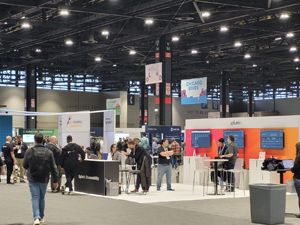 [Click on image for larger view.]
[Click on image for larger view.]
The company recently expanded its offerings with a managed service announcement, allowing customers to bring their own distribution and have Zededa manage it. This move aligns with the growing demand for Kubernetes on the edge, with an emphasis on multiple containers. Zededa's venture into edge AI and distributed machine learning further solidifies its commitment to providing comprehensive solutions for large enterprises.
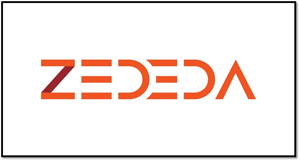 [Click on image for larger view.]
[Click on image for larger view.]
Acorn -- Simplifying Kubernetes Deployment: Next, I had a chance to talk to Shannon Williams from Acorn. The year-old company presented an intriguing solution to simplify Kubernetes deployment. Focused on developing a developer platform for Kubernetes, Acorn aims to bridge the gap for those with limited Kubernetes knowledge. Their platform, similar to Docker containers, eliminates the need for extensive Kubernetes expertise, providing a standardized approach for deploying applications seamlessly across various environments, including a newly announced Acorn Cloud service.
By replacing the need for multiple configuration tools like Helm, Compose and Terraform, Acorn streamlines the deployment process, making it accessible to a broader audience. The company's commitment to an open-source engine aligns with the industry's shift towards user-friendly solutions.
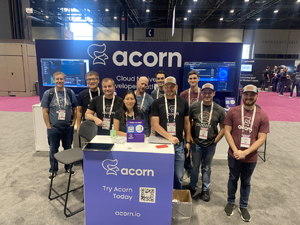 [Click on image for larger view.]
[Click on image for larger view.]
Armory -- Continuous Deployment for Containers: After talking to Zededa and Acorn I was able to attend a few more sessions. Adam Frank from Armory presented insights into the world of continuous deployment for containers. Armory, a company dating back to 2016, rebranded as a declarative solutions company in 2022. With a focus on declarative deployment and serverless deployment, Armory simplifies the orchestration of deployments with a declarative nature, emphasizing the 'what' over the 'how.' Their platform supports blue-green and canary deployments, providing flexibility for developers and platform engineers.
Armory's partnership with Pure Storage showcased their dedication to efficient edge computing. The collaboration enables developers to run code seamlessly, emphasizing the importance of a reliable deployment infrastructure, especially in edge computing scenarios.
MinIO -- Object Storage and Cloud Models: MinIO has become a staple in private cloud infrastructure, particularly in the object storage realm, and I was excited to hear Jonathan Symonds, the chief marketing officer of MinIO, share his insights into the company's focus on high-performance object storage, with a primary emphasis on AWS S3 and Google Cloud Platform compatibility.
He highlighted MinIO's commitment to simplifying Kubernetes in the enterprise. This was evident in their elegant MinIO Operator, offering a straightforward way to manage complex storage configurations. The company's performance at scale, supporting diverse workloads like Snowflake, SQL, AI and ML. This positions them as a key player in managing large data structures.
 [Click on image for larger view.]
[Click on image for larger view.]
Discover: Cultivating Open-Source Culture: Angel Diaz, a VP from Discover, shed light on the financial company's commitment to technology and open source. With a tech-centric culture, Discover actively contributes to open-source projects and promotes learning through inner open-source guilds. His keynote presentation highlighted the importance of open-source principles in engineering and showcased the company's involvement in numerous projects, including being hosts for the world's largest hackathon in financial services.
He emphasized the necessity of applying open-source principles to enhance developer experience and reduce friction in the supply chain of open-source projects. As consumers of Kubernetes and cloud services, Discover provides real-world examples to the community, fostering collaboration and understanding of how companies leverage open-source technologies.
Thursday: Kubernetes Observability, Data Resilience and Kubernetes
Dynatrace: Kubernetes Observability Experience: Andi Grabner, a cloud ambassador at Dynatrace, introduced the company's role in ensuring the security and reliability of Kubernetes workloads. Dynatrace provides a comprehensive observability experience, offering an opinionated view of Kubernetes environments and actionable insights to optimize results.
Andi made a major announcement from Dynatrace -- the Kubernetes Observability Experience. This provides platform engineers and operators with the right data to address Kubernetes-related issues. This opinionated experience extends to developers, offering traces and logs for their workloads. The company's emphasis on efficiency, green engineering, and reliability positions them as a critical player in the Kubernetes ecosystem.
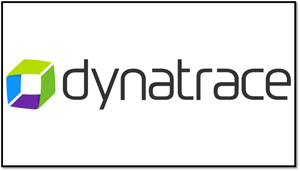 [Click on image for larger view.]
[Click on image for larger view.]
Kasten by Veeam -- Data Resilience and Kubernetes: Michael Cade from Kasten, now a part of Veeam, provided insights into data resilience and Kubernetes. Kasten K10, focused on backup recovery, disaster recovery and cybersecurity remediation, offers a robust solution for protecting data in Kubernetes clusters. The company's commitment to open source is evident in their donation of the Kanister project to the CNCF landscape, allowing the community to shape its direction.
Kasten's collaboration with Veeam addresses data protection across various domains, with a keen focus on Kubernetes and MongoDB. The presentation highlighted the importance of data protection in high-availability scenarios, emphasizing that it goes beyond merely ensuring data safety but also enables recovery in any environment and workload.
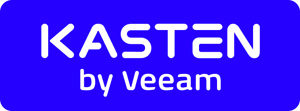 [Click on image for larger view.]
[Click on image for larger view.]
Challenges
After attending KubeCon I found that the major challenges highlighted during it underscored the complexities inherent in navigating the cloud-native landscape. One notable challenge was the ever-growing intricacy of Kubernetes environments. As organizations adopt and expand their usage of Kubernetes, concerns regarding the management of large-scale clusters, dynamic resource allocation and ensuring data resilience become more pronounced. Security remained a persistent challenge, with an emphasis on the need for secure supply chains, especially when dealing with open-source components. The integration of new technologies, such as WebAssembly and edge computing, also posed challenges, demanding thoughtful consideration of their implications on existing infrastructures.
Trends
Conversely, the trends that I observed at the event illuminated the industry's dynamic evolution. A prevailing trend was the integration of AI and machine learning into Kubernetes environments, with a specific focus on dynamic resource allocation and the potential economic impact of generative AI. Edge computing garnered significant attention, reflecting the industry's increasing reliance on decentralized processing for improved efficiency and reduced latency. The prominence of open-source contributions and the emphasis on developer experience showcased a community-driven approach to innovation, highlighting the collaborative nature of the cloud-native ecosystem. Moreover, the continued exploration of novel approaches to containerization, exemplified by the interest in tiny containers and the evolution of declarative deployment strategies, reflected a commitment to streamlining and optimizing workflows in the Kubernetes space.
Conclusion
KubeCon 2023 provided me with a dynamic platform for exploring the latest in cloud-native technologies and community-driven initiatives. From securing software supply chains to optimizing container efficiency and empowering community contributors, the event encapsulated the cutting-edge developments driving the future of cloud computing. As a media analyst, the experience was not just informative but a firsthand journey into the heart of innovation and collaboration in the Kubernetes ecosystem. I look forward to witnessing how these developments shape the future of technology and redefine the way we approach infrastructure and application deployment.
Many of the sessions were videotaped and can be seen online here and the slides provided from the speakers can be seen in the event schedule.
KubeCon + CloudNativeCon Europe 2024 will be held in Paris March 19-22, and information about it and the Nov. 12-15 Salt Lake City event can be found here.